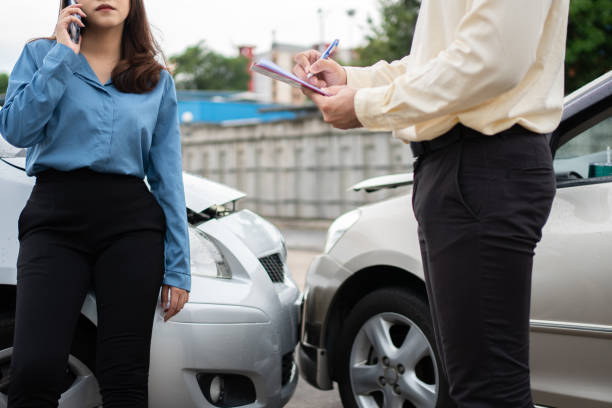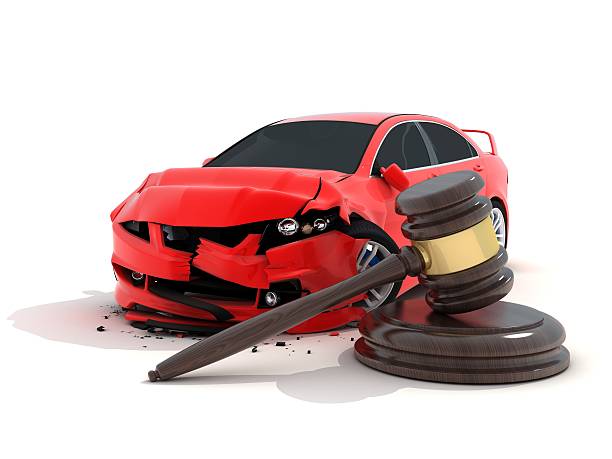
The problem of distracted driving has elevated a significant worry for American road safety in recent years. The prevalence of mobile gadgets and a busier way of life have increased the number of accidents brought on by distracted driving. This post explores the serious negative effects of distracted driving, the pertinent US laws, and how we can all work together to make our roads safer.
Alarming Statistics of Distracted Driving

The National Highway Traffic Safety Administration (NHTSA) estimates that distracted driving contributes to about 9% of all fatal accidents in the United States. This amounts to hundreds of lives lost each year as a result of avoidable collisions brought on by careless drivers. Numerous more people get serious injuries and lose property as a result of the impact, which is not limited to fatalities. These startling statistics illustrate the severity of the problem and the demand for all-encompassing actions to successfully combat distracted driving.
The Different Types of Driver Distractions
A driver’s attention might be drawn away from the work at hand by a variety of activities, all of which constitute distracted driving. Driver distractions typically fall into one of three categories: cognitive, manual, or visual. Visual distractions happen when a driver diverts their attention from the road to anything else, like adjusting the GPS or glancing at a map. To engage in manual distractions, such as eating, reaching for something, or grooming, one must take their hands off the steering wheel. Cognitive distractions occur when a driver’s mental attention is diverted from driving, which might happen while they are having in-depth talks or daydreaming.
The Impact of Cell Phones on Driving

Road safety and driving habits have been significantly impacted by the widespread usage of cell phones. Although cell phones have become an indispensable element of contemporary life, using one while driving is risky. Texting, talking on the phone, surfing the web, or using social media all need the visual, physical, and cognitive focus of drivers. Even a fleeting glimpse at a notification might have disastrous effects while driving. Studies have repeatedly demonstrated that texting and driving more than double the likelihood of an accident, making it a particularly dangerous habit.
Understanding the Dangers of Texting and Driving
One of the riskiest activities on the road, of all distractions, is texting while driving. Texting requires a driver’s undivided concentration, which frequently results in tunnel vision and impairs their ability to respond quickly to changing road circumstances. Drivers are essentially rendered unconscious in crucial situations where split-second judgments are needed to avert accidents due to this simultaneous cognitive, visual, and manual distraction. Texting for even a little period can have tragic consequences, leading to serious injury or even death. Knowing the serious risks of texting while driving serves as a harsh reminder of each driver’s duty to put safety first and maintain constant attention on the road.
US Laws and Penalties for Distracted Driving
The US government has put in place several rules and regulations to prevent distracted driving due to the increased danger it poses. The regulations and sanctions, nevertheless, differ from one state to the next. Most states now have some kind of hands-free law that forbids using portable devices while driving. Some states have enacted stronger regulations, such as outlawing mobile phone usage altogether for inexperienced drivers and school bus drivers.

Distracted driving offenses can result in fines, points on a driving license, and, in extreme circumstances, even the suspension or cancellation of a license. To prioritize road safety and avoid potentially fatal incidents, all drivers must stay aware of these regulations and their implications.
The Role of Technology in Combating Distracted Driving
Technology, which is frequently held responsible for distracted driving, may also significantly help to mitigate this urgent problem. Innovative answers have surfaced to deal with the issue head-on and promote safer driving practices. The creation of smartphone applications that prevent incoming calls, texts, and notifications while the car is moving is one example of this technology. These applications, sometimes referred to as “driving mode” or “do not disturb” capabilities, assist in reducing the temptation to check one’s phone while driving and encourage a distraction-free atmosphere.
Raising Awareness and Education
Through extensive awareness and education programmers, one of the most successful strategies is to stop distracted driving. We can promote a culture of safe behaviors on the roads by educating the public about the dangers and repercussions of distracted driving. These efforts can take many different shapes, such as radio and television ads, outreach on social media, and neighborhood gatherings.
By incorporating awareness programs into driver’s education courses, schools, and driving organizations may also make a significant contribution to teaching novice drivers about the risks of distracted driving. Sharing personal accounts of those impacted by distracted driving collisions can also have a significant influence on how others see and behave while driving.
Encouraging Safer Driving Habits
To reduce the prevalence of distracted driving, it is essential to encourage and promote safer driving practices. By setting a positive example on the road, seasoned drivers may emphasize the need to maintain concentration while driving. Distractions may be avoided with a few easy steps, such as placing mobile devices on mute or out of reach while driving. Drivers should set aside time before or after their trip for any important chores and resist the impulse to multitask. Passengers may help drivers stay focused by offering to take care of any chores that are unrelated to driving, such as phone calls or navigation.
The Collective Effort for Safer Roads
Government entities, law enforcement, non-profit organizations, corporations, and the general public must all work together to address distracted driving. Enforcement of current distracted driving regulations and penalties may be strengthened, and lawmakers can look into new options to improve traffic safety. Through targeted programs and checkpoints, law enforcement is instrumental in enforcing distracted driving regulations and increasing public awareness. Non-profit organizations can promote traffic safety, push for stronger laws, and work with educational institutions to conduct programs. Businesses can enact workplace regulations that forbid workers who drive for business to engage in distracted driving.




















